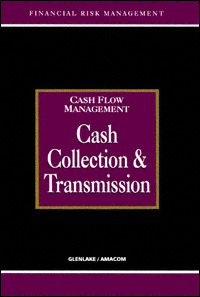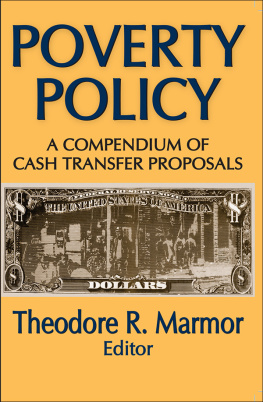Cover

| title | : | Cash Collection & Transmission Financial Risk Management |
| author | : | Coyle, Brian. |
| publisher | : | AMACOM Books |
| isbn10 | asin | : |
| print isbn13 | : | 9780814405383 |
| ebook isbn13 | : | 9780814425008 |
| language | : | English |
| subject | Cash management. , Collecting of accounts. |
| publication date | : | 2000 |
| lcc | : | HG4028.C45C69 2000eb |
| ddc | : | 658.15 |
| subject | : | Cash management. , Collecting of accounts. |
Page i
Page ii
Page iii
Cash Collection & Transmission
Brian Coyle

Page iv
This book is available at a special discount when ordered in bulk quantities. For information contact Special Sales Department, AMACOM, an imprint of AMA Publications, a division of American Management Association, 1601 Broadway, New York, NY 10019
This publication is designed to provide accurate and authoritative information in regard to the subject matter covered. It is sold with the understanding that the publisher is not engaged in rendering legal, accounting, or otherwise professional service. If legal advice or other expert advice is required, the services of a competent professional person should be sought.
The Chartered Institute of Bankers 2000
ISBN: 0-8144-0538-X
All rights reserved. No part of this book may be reproduced in any form or by any means, electronic, mechanical, photocopying, recording, or otherwise without the prior written permission of the publisher.
This book is not for resale outside the United States of America.
Printing number
10 9 8 7 6 5 4 3 2 1
Page v
Contents
| 1. Introduction | 1 |
| 2. Cash Collection | 5 |
| 3. Cash Collection: International Banking | 15 |
| 4. Reviewing Cash Collections & Payments | 29 |
| 5. The Customer-Bank Relationship | 39 |
| 6. Bank Account Configurations | 49 |
| 7. Netting | 51 |
| 8. Cash Pooling and Concentration Accounts | 71 |
| 9. Electronic Banking Systems | 89 |
| 10. Conclusion | 103 |
| Glossary | 105 |
| Index | 115 |
Page vi
Page 1
1
Introduction
Page 2
Money has a cost or a value. It has a cost to businesses that dont have it and need to borrow it. It has a value to businesses that can deposit it to earn interest. All companies, large or small, should try to manage their cash to keep interest costs as low as possible, or to achieve high-interest income. Cash management is concerned with using money efficiently and effectively to control interest costs or optimize income.
Companies that either borrow or hold surplus cash have some exposure to interest-rate risk. This is the risk of lower income or higher costs from an adverse change in interest rates. Risk can be hedged (reduced) structurally by avoiding unnecessary cash deficits or surpluses, and cash management should contribute towards this aim.
Where money is held or owed in foreign currency, there is the additional objective of limiting the currency risk. Adverse exchange rate movements could reduce the value of cash held in a foreign currency or increase the cost of currency loans and overdrafts.
A group of companies with several bank accounts around the world and cash flows in different currencies can try to hedge its currency exposures and interest rate exposures by cash management methods, by for example
- matching cash receipts by a subsidiary in one currency with payments in the same currency by another subsidiary
- netting intercompany dealings to minimize transactions with financial institutions
- offsetting the cash surpluses of one division against the borrowing needs of another
Page 3
- minimizing the groups total external debts.
Organizing exposure management at group level calls for a flexible cash-management system. The group must be able to switch cash from one subsidiary and one bank account to another. Up-to-date and accurate information about the cash position of each subsidiary also is essential.
This book considers three important aspects of cash management: cash collection, banking configurations and electronic banking systems. They concern
- the methods of collecting cash and making payments
- the way in which bank accounts are organized
- the use of electronic systems for making payments and directing money flows.
Page 4
Page 5
2
Cash Collection
Page 6
Cash payment and cash collection are two aspects of the same money transfer. When a payment is made through the banking system, the payers account is debited with the amount of the payment and funds are deducted from the account. The account of the payee (recipient) is credited and funds are paid into the account. When the payees account receives funds that can be spent immediately, the payee is said to have received or obtained value for the funds.
The loss of value in the payers account and the receipt of value in the payees account do not necessarily occur at the same time or even on the same day. The payer could lose value from his account before the payee obtains value. In the intervening time, the bank of either the paying or payee customer has the benefit to itself of the funds in transfer. For banks, this period is known as the float.
One function of cash management should be to consider how customers make payments. An alternative method of payment might enable the company to receive value more quickly for inward payments or to time the loss of value for outward payments more exactly. Or it might be appropriate to negotiate a quicker processing time with its bank for payments by existing methods. In other words, the company should seek methods to reduce the float that represents lost interest revenues.
Float
The float is the amount of cash that has been paid to a company, for which the company has yet to obtain value (cleared funds) at the bank.
Page 7
Float time is the time between a customer initiating a payment and the company being informed or aware that it has obtained value at the bank.
There are four causes of float time
- transmission delay
- lodgment delay
- clearance delay (bank float time)
- advice delay
Transmission delay is the time between the sending of a payment and its physical receipt by the payee. For electronic transmissions, the delay is until the funds are credited to the account. A check sent by post could take from one day up to several weeks to reach its recipient, depending on the postal service used and the country of dispatch. Payments sent by courier can be received the same day, but at the cost of the couriers fee by the payer or the payee.
Next page









